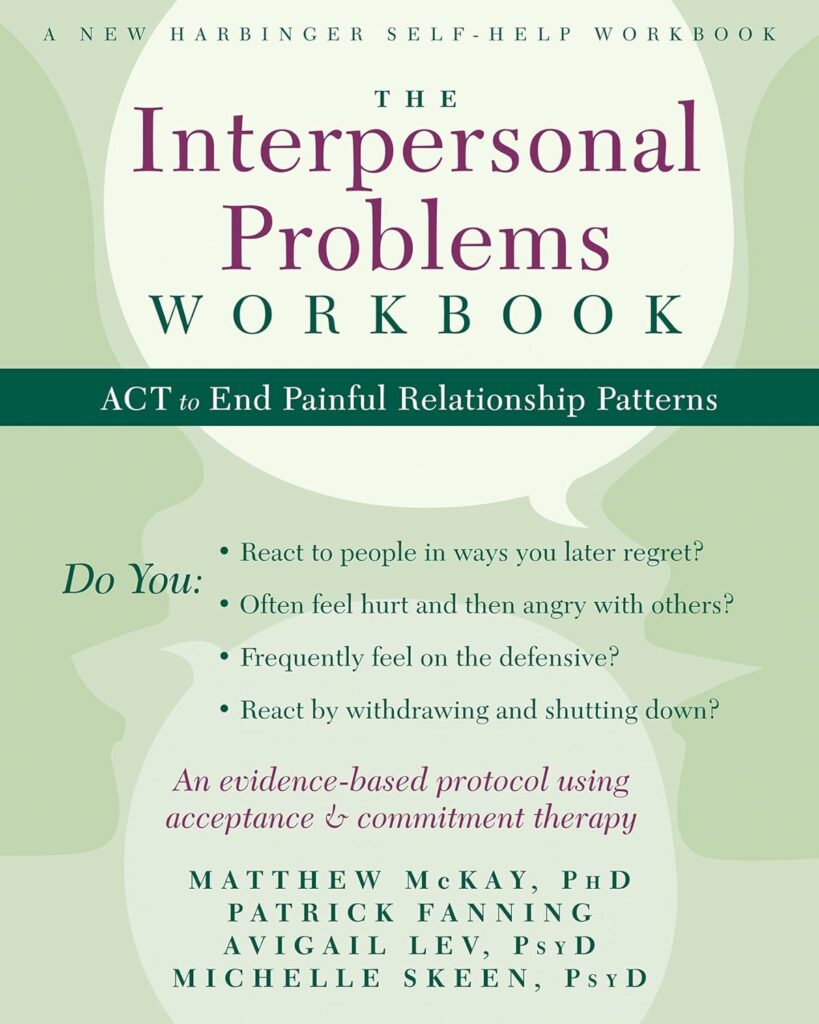At the heart of Acceptance and Commitment Therapy (ACT) lies the understanding that attempting to control painful experiences can lead to more suffering. Instead, ACT teaches us to accept these experiences while committing to behaviors aligned with our values.
Dropping the Struggle
Society tries to convince us that we can control our internal experiences. We constantly hear messages like “Don’t worry about it. Relax. Calm down.”
That’s dead wrong. Just hearing the words “Don’t worry” can make us anxious.
Telling yourself “Don’t worry” isn’t much different. The more often we think, “Don’t feel anxious you can’t feel anxious don’t be depressed don’t be sad you shouldn’t be upset” the more anxious, depressed, sad and upset we’ll become.
Let’s take a metaphor from Acceptance and Commitment Therapy, developed by Hayes and Masuda, as an example of how this process works. Imagine that you’re hooked up to a very sensitive polygraph machine. This polygraph machine can pick up the slightest physiological changes that occur in your body, including any changes in heartbeat, pulse, muscle tension, sweat, or any type of minor arousal.
Now suppose I say, “Whatever you do, don’t get anxious while you’re hooked up to this highly sensitive device!”
What do you imagine might happen?
You guessed it. You’d start getting anxious.
Now suppose I pull out a gun and say, “No, seriously, whatever you do as long as you are hooked up to this polygraph machine you cannot get anxious! Otherwise, I shoot!”
You’d get extremely anxious.
Now imagine I say, “Give me your phone or I’ll shoot.”
You’d give me your phone.
Or if I say “Give me a dollar or I’ll shoot.”
You’d give me a dollar.
Although society tries to sell us the idea that we can control our internal experiences the same way we do objects in the external world, the truth is that we actually can’t. We can’t control our thoughts, feelings, and sensations, the way we can control objects in the world. In fact, the more we try to control or change our internal experiences the more out of control we feel. The more we try to get rid of distressing thoughts and feelings the stronger they become.
This is what many of us do to ourselves when we experience uncomfortable feelings. Our minds, like the polygraph machine, pick up sensations in our bodies. Then we pull out the gun against ourselves and tell ourselves not to have certain emotions. We start struggling with trying to control and eliminate certain thoughts and feelings. The more we try get rid of our experience the more they intensify.
What if we dropped the gun and were kind to ourselves instead? Thoughts and feelings shift and change like the weather. They are temporary. They intensify when we bully ourselves, and fade away with acceptance and self-compassion.
Accepting Unavoidable Pain
Painful feelings such as loneliness, fear, sadness, deprivation, rejection, and disappointment are an unavoidable part of life. They are just a part of being a human being. Although we don’t have control over having painful emotions that are a part of being alive, we always have control over our actions. We can always choose to respond in ways that are consistent with our values, regardless of how we feel.
We may sometimes think that our emotions force us to act a certain way. We think our emotions are in charge. They’re not. We are. We are never ever truly trapped into actions we don’t want. We can always choose to respond to our emotions in ways that leave us free.
The Power of Surrendering to the Present Moment
Surrendering to the present moment is akin to releasing a tightly held fist. Imagine your hand clenched so tightly that your knuckles turn white, embodying the resistance and struggle we often hold within us, especially in moments of high stress or emotional trigger. The act of slowly opening up your hand, uncurling each finger and feeling the tension dissipate, serves as a powerful metaphor for what it means to surrender to the present.
In a triggered state, our instinct is to tighten, to control, to resist what we are experiencing, much like clenching our fists. However, dropping the struggle involves a conscious decision to open up, to let go of the resistance, and to stop trying to change the experience in the moment. It’s about allowing the present to unfold as it is, acknowledging that it’s not within our control.
Embracing the Flow
This surrender doesn’t mean giving up or conceding defeat. Rather, it’s an acceptance of the current state of affairs, recognizing that we don’t have to fight against the current of life. We can choose to flow with it, even when it takes us through uncomfortable waters. Instead of maintaining a clenched fist, which might symbolize holding onto our discomfort with a stubborn refusal to let go, we can get curious about what we’re feeling. Why is this discomfort here? What can it teach us?
The saying you’re trying to recall might be along the lines of “Letting go of the oars and going with the flow,” which encapsulates the essence of surrendering to the present moment. It’s about ceasing to fight the direction of the river’s current and instead, allowing it to guide you. This approach doesn’t just apply to moments of discomfort but to life’s journey as a whole. By opening our hands and our hearts, we open ourselves up to the full range of experiences life has to offer, finding peace and contentment in the acceptance of what is, rather than what could be.
Embracing the Present with SchemACT
In SchemACT Therapy, anchoring in values plays a crucial role in achieving emotional freedom. This pivotal step goes beyond the struggle with fleeting emotions and the deeply ingrained stories that shape our perceptions. It calls for a significant shift from being held back by limiting narratives to anchoring ourselves in the core values that define our deepest convictions and sense of purpose.
This evolution requires us to not only release the narratives that confine us but to also actively engage with our somatic (bodily) experiences as a gateway to the present moment. By anchoring in our values, we find a stable foundation amidst the ever-changing landscape of our emotions and thoughts. This process involves identifying what truly matters to us—our guiding principles and what we stand for—and using these values as a compass to navigate our emotional landscape.
Integrating our values into our somatic experiences allows for a more profound connection with the present, where our actions and reactions are not merely responses to external stimuli but are deeply rooted in what is authentically significant to us. This alignment between our values and our present experiences fosters a sense of coherence and authenticity, enabling us to transcend the old narratives and embrace a life of greater freedom and fulfillment.
Embracing Somatic Wisdom
Focusing on our somatic experiences, including bodily sensations, enables us to release maladaptive schemas and narratives, regulate emotions, and align with values, fostering behavioral flexibility. This presence enhances our capacity to broaden our window of tolerance, allowing for more effective action even when triggered.
By becoming attuned to our bodily sensations, we distance ourselves from automatic narratives that prompt emotional reactions, gaining a more direct, unfiltered reality experience. This method deepens our understanding and release of limiting narratives, enhancing our direct, embodied connection with the world.
So, how can we drop the gun and embrace all our internal experiences?
- Notice when you’re pulling out a gun on yourself — judging or struggling with your internal experience.
- Drop the struggle. Instead, give the emotion a neutral label. Say to yourself “I feel scared” or “I feel hurt.”
- Notice the sensations in your body that comes with that emotion. Stay present with the sensations. Notice the size, shape, color, and texture of the sensation.
- Drop the story in your head about “why” you’re feeling this way. Focus on sensations and feelings rather than ideas.
- Open up to the emotional experience. Practicing self-compassion and loving kindness helps us soften up to our emotional experience without pushing it away. Put your hand on your heart and speak to yourself as you would to someone you love. You might say, “This is really difficult” or “It makes sense that I feel sad now.”
- Remember we are all in this together. Think of all the people right now in this world who are feeling helpless, lonely, deprived, or rejected. You are not alone. Being human comes with pain.
Those steps are the essence of self-compassionate care. Self-compassion is embracing your humanness.
Choose self-compassion and you will be free to act in line with your values.
For now, please take this message to heart. Much of the time, you’re the one with the gun. Don’t pull out the gun and you will be free.
Take the self-compassion questionnaire to assess your level of inner kindness. Take the schemas quiz to find the limiting beliefs that contribute to your anxiety.









































